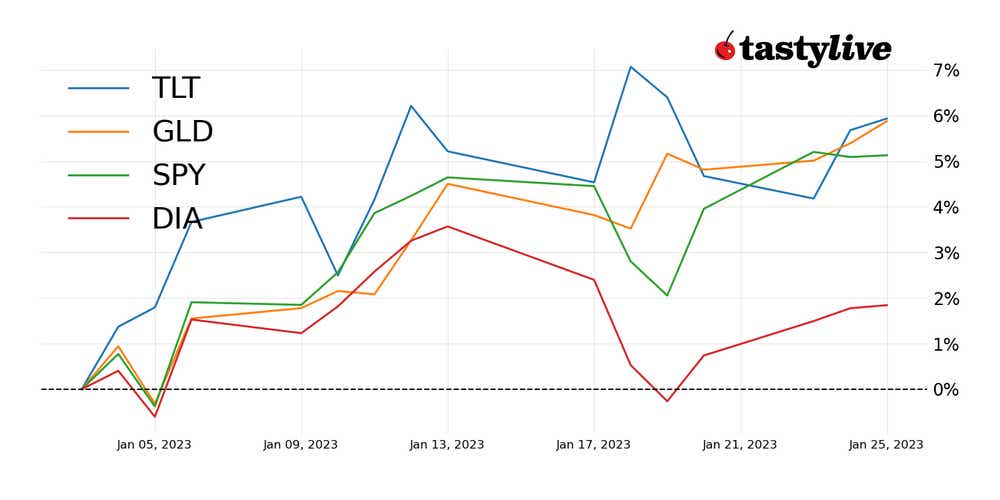Dow Futures Update January 2023: Can the Uptrend Continue?

Dow Futures Update January 2023: Can the Uptrend Continue?
What are Dow Futures?
The Dow Jones Industrial Average (DJIA) is an index that tracks 30 large companies trading on the New York Stock Exchange (NYSE) and Nasdaq. The composition of the index changes over time to reflect the most relevant stocks trading in the market. The DJIA index itself cannot be traded. You must trade a financial instrument that tracks the DJIA index in order to trade the movements of the index.
The E-Mini Dow Futures (/YM) contract is a financial instrument that can be traded. The E-Mini Dow Futures contract ticker is /YM. The /YM contract is very liquid and offers several benefits to the trader. This contract is leveraged and offers direct exposure to the price movements of the index’s composition. Futures contracts exist for a specified length of time before expiring and then being replaced with a new contract that extends further into the future.
The Dow Industrials SPDR (DIA) fund is an ETF that can be traded. This fund consists of the same components as the DJIA index. DIA can be bought and sold in the same way that you would buy /YM, however the price of DIA is calculated differently and does not match the price of the index in the same way that the /YM futures contract will.
DIA has options and its options markets are very liquid. If you want to trade options around the movements of the Dow Jones Industrial Average (DJIA), DIA is a good proxy.

How has the Dow traded so far in 2023?
The E-Mini Dow Futures (/YM) contract is currently trading at 33,787, up 0.16% from its opening price of 2023. Price action remains in a breakout range from the downtrend channel in 2023. The 32,645 to 34,450 range has been a comfortable range for the Dow so far in 2023. Buyers and sellers have been hesitant to move out of this range in the last three weeks.
Support exists below the current range around 32,071 and resistance exists above the current range around 25,274. Price action bounced off this resistance level in mid-December of last year.
Price action in 2023 has been sideways. Big rallies have been sold off and any velocity to the downside is met with support. Market volatility has been relatively low so far compared to last year.
Where is the Dow heading next?
Technically speaking, price action currently appears to be forming a bull flag, but since that pattern is apparent, we could also be forming a topping pattern that will lead to a short-term reversal. Taking a step back and looking at price action since October of last year, it is very possible that buyers are out of steam and sellers have been taking over for the last three weeks.
If we get a down move from here, look for price to test support around 32,000. If we get an up move, it is possible that the price tests all-time highs.
Our current Dow range sits in the middle of 2022’s range. Market sentiment is mixed. Since volatility is low, premium selling opportunities are less prevalent. Directional plays in this environment are likely necessary to collect enough premium to put a trade on. Be ready to adjust delta-neutral positions if we get a breakout to the upside or downside from our current range.
Options involve risk and are not suitable for all investors. Please read Characteristics and Risks of Standardized Options before deciding to invest in options.